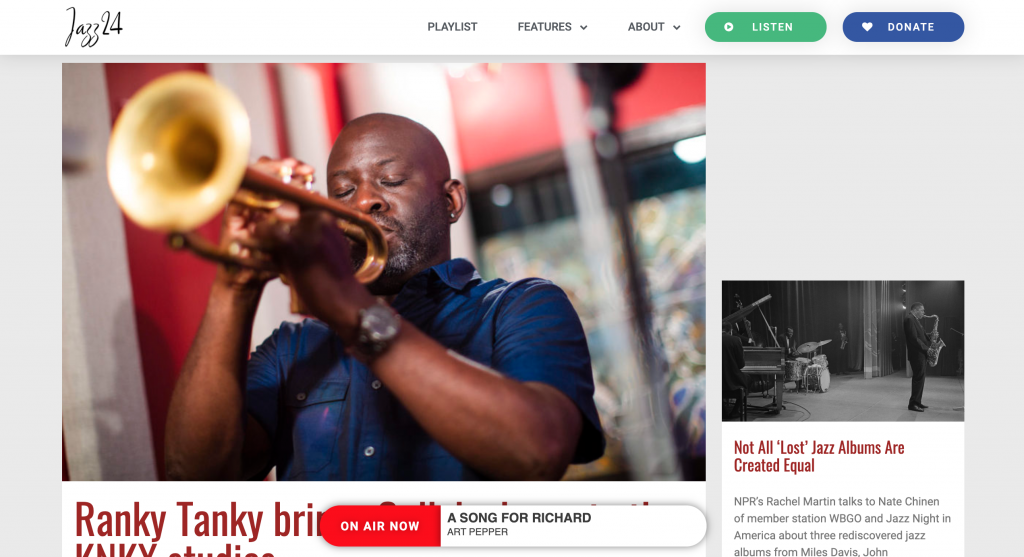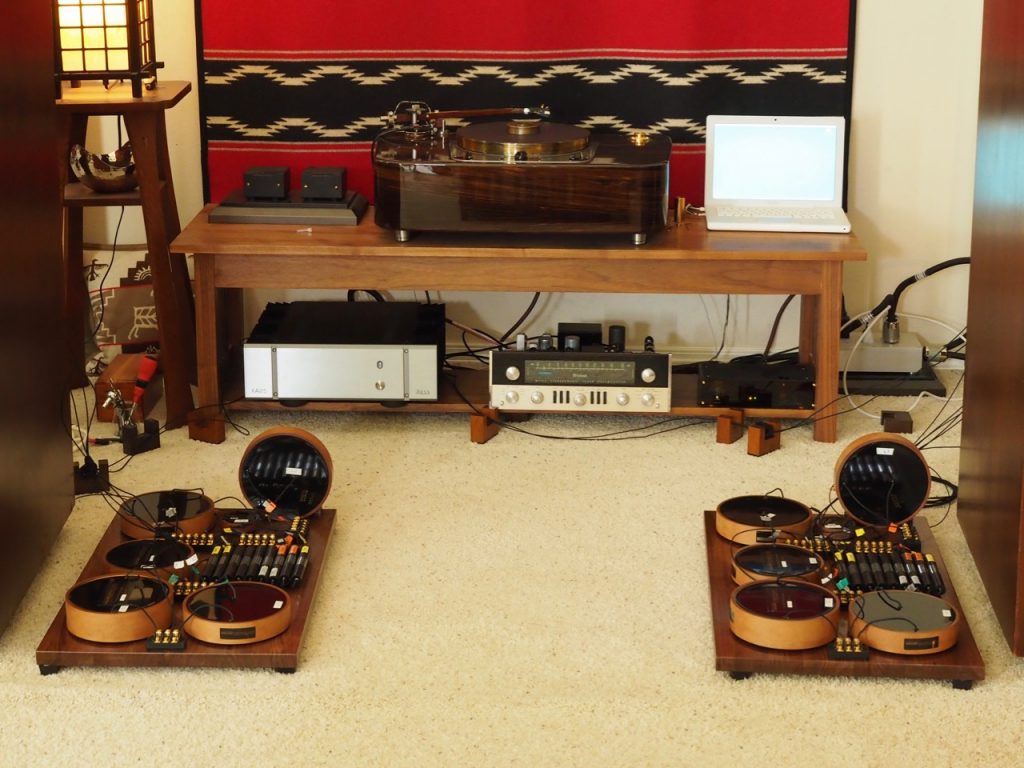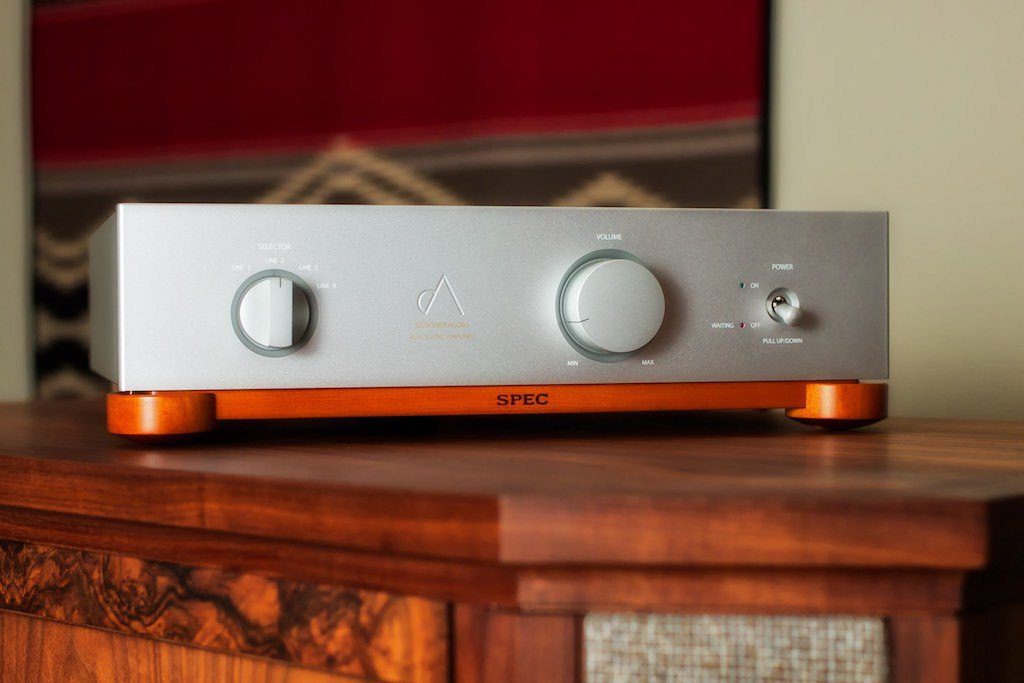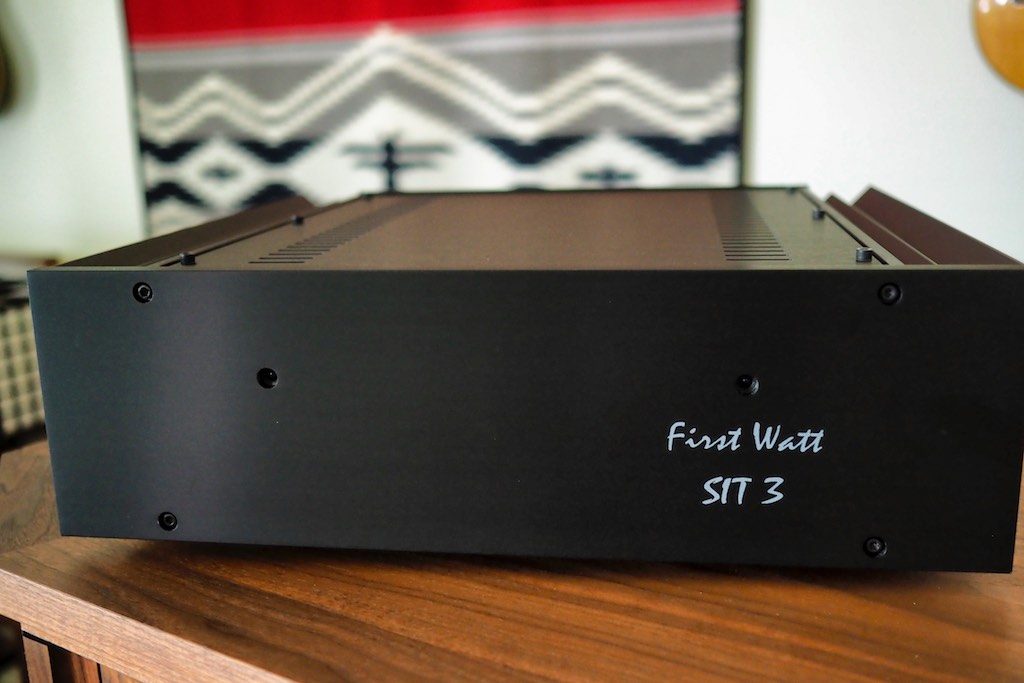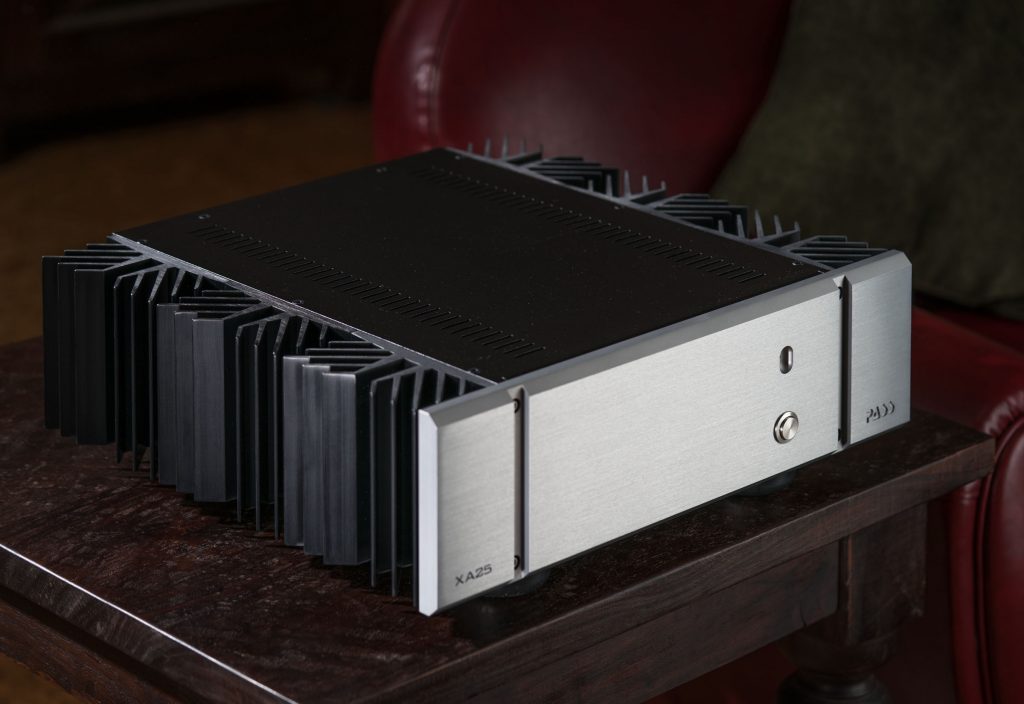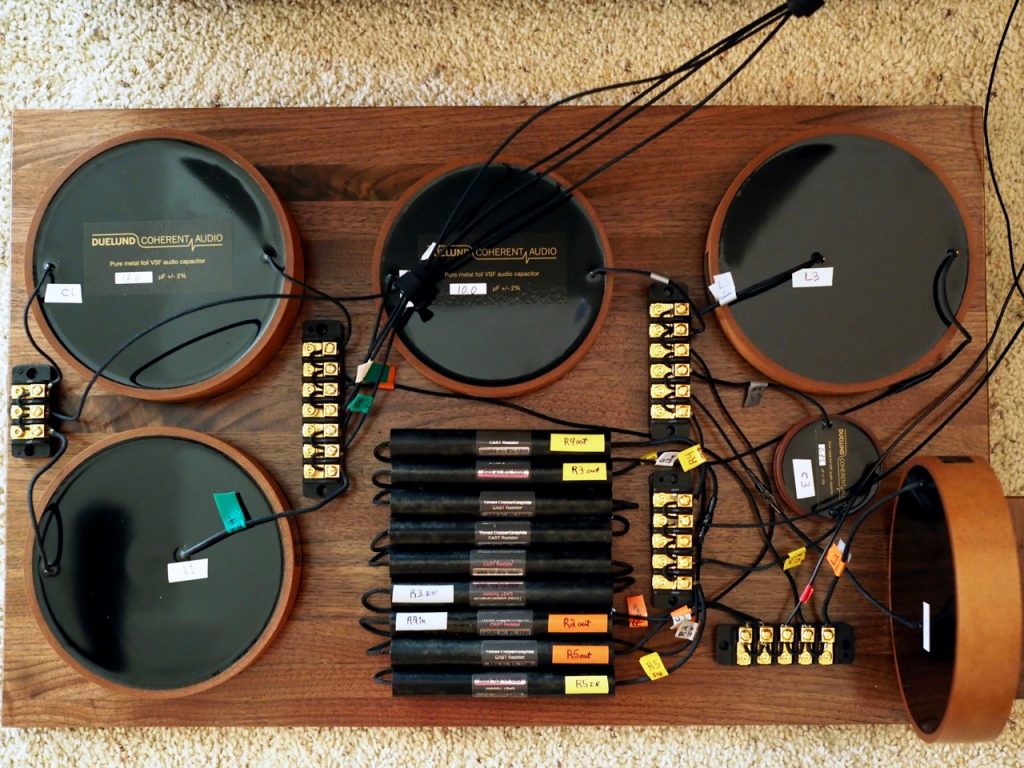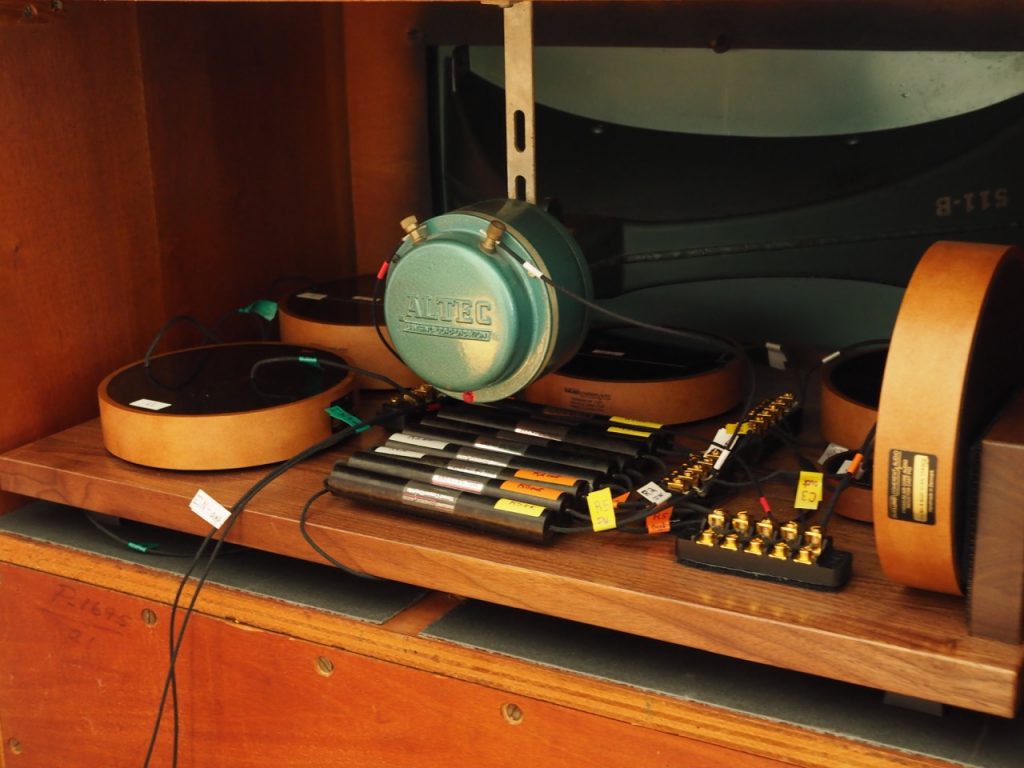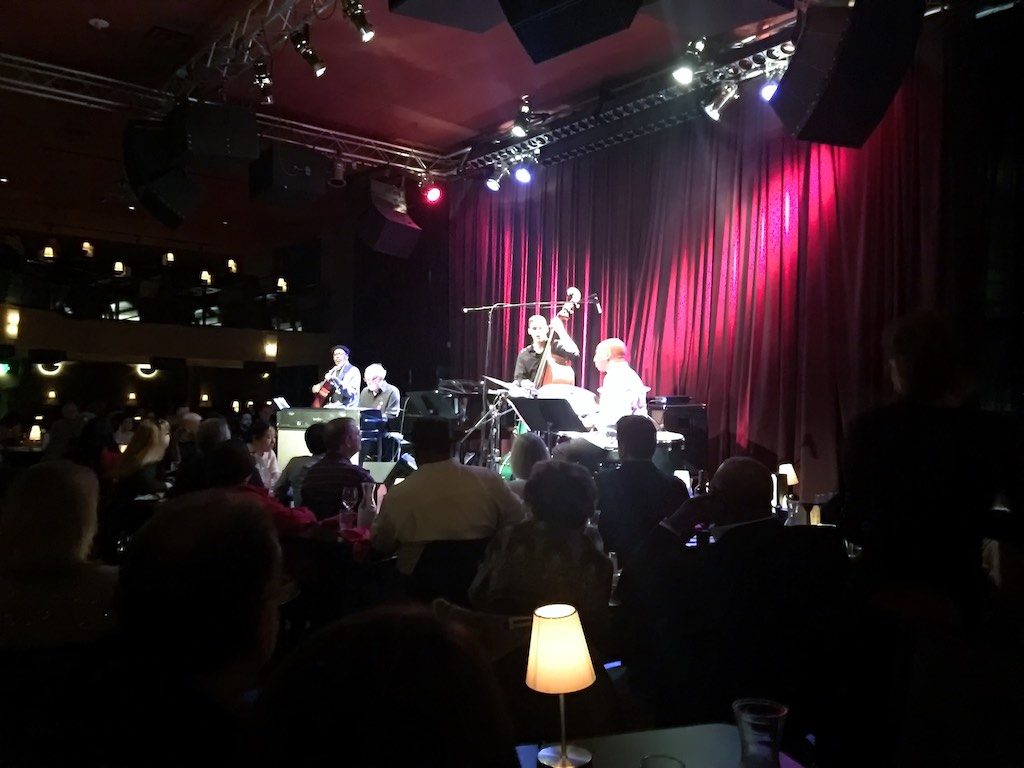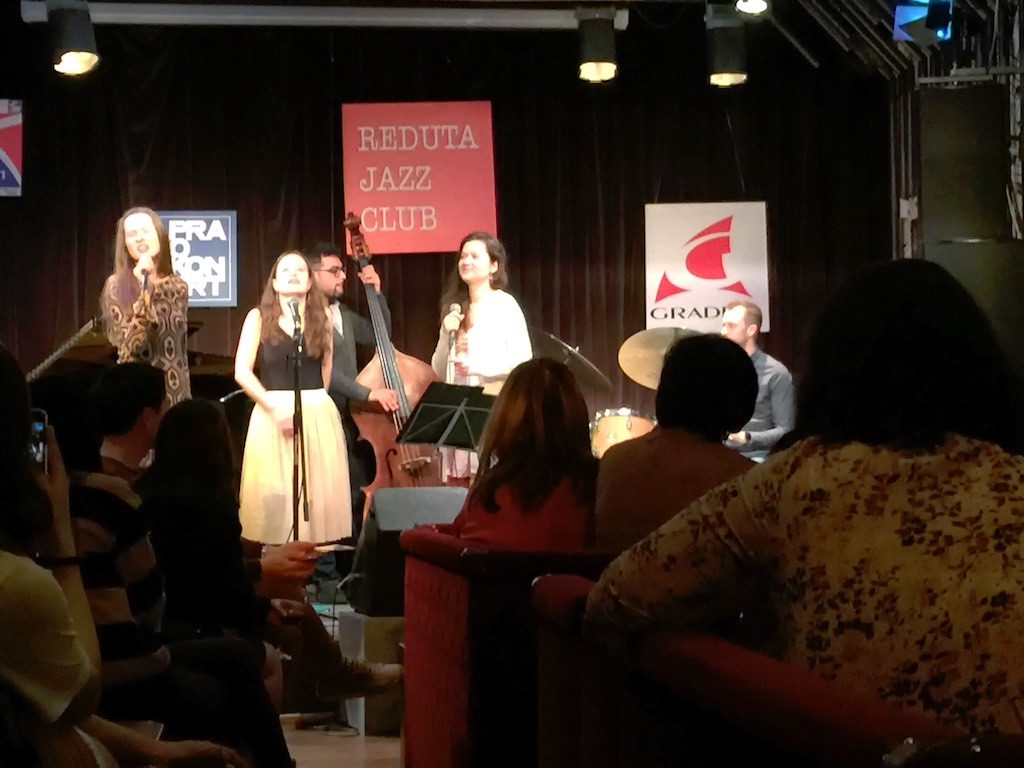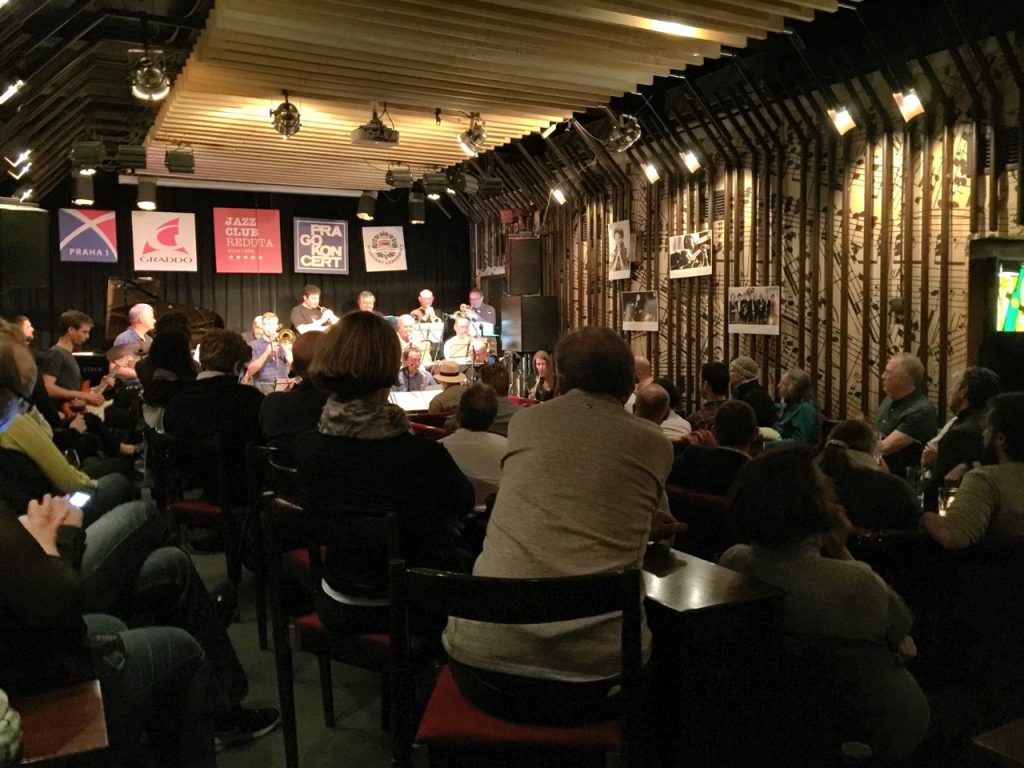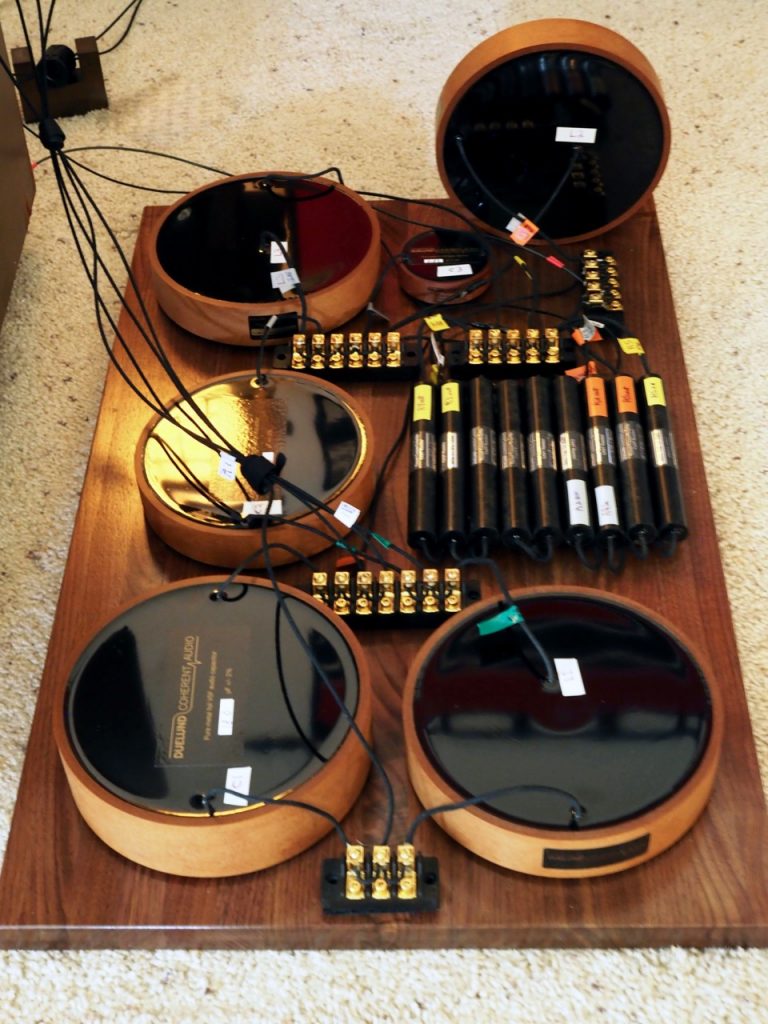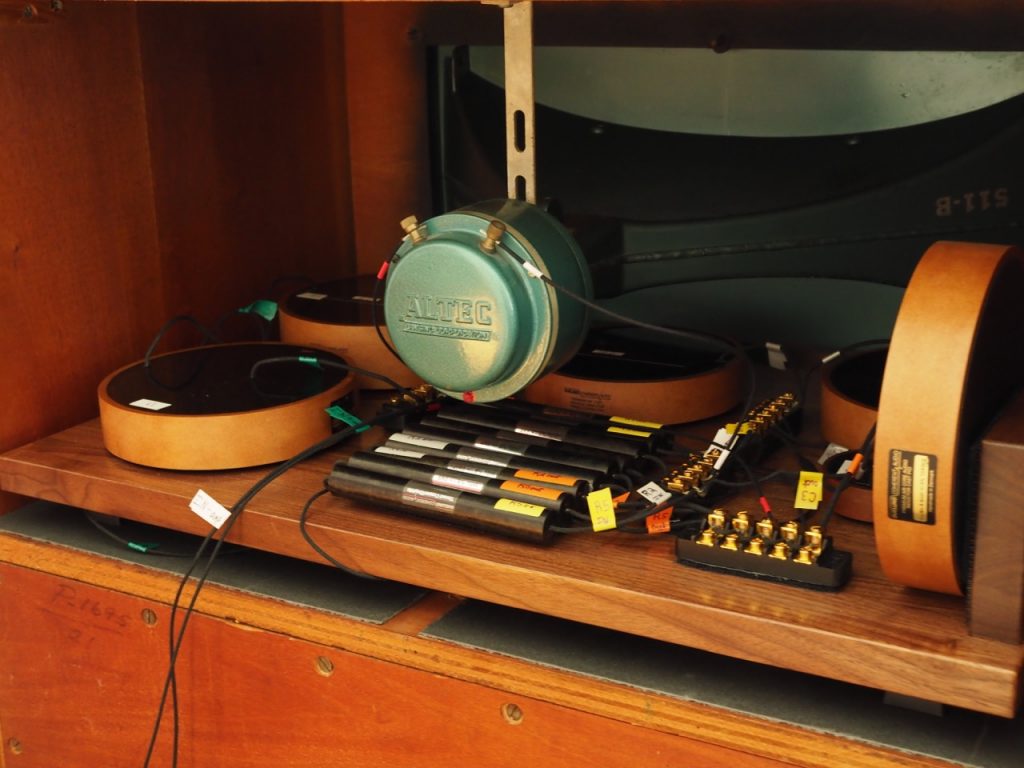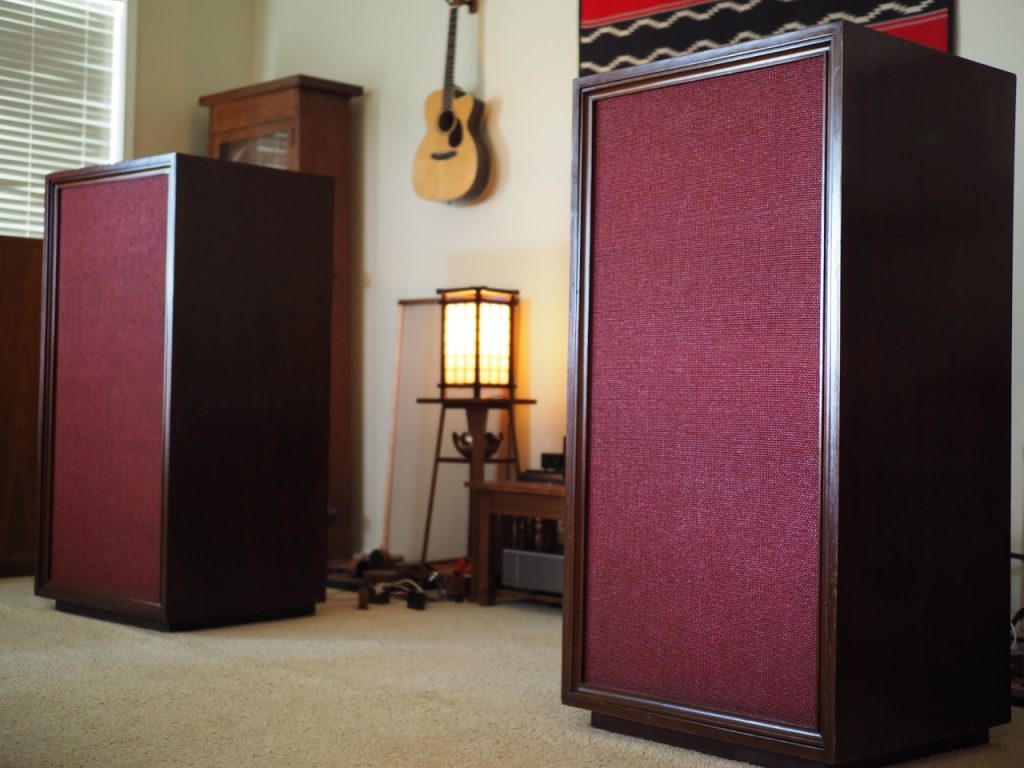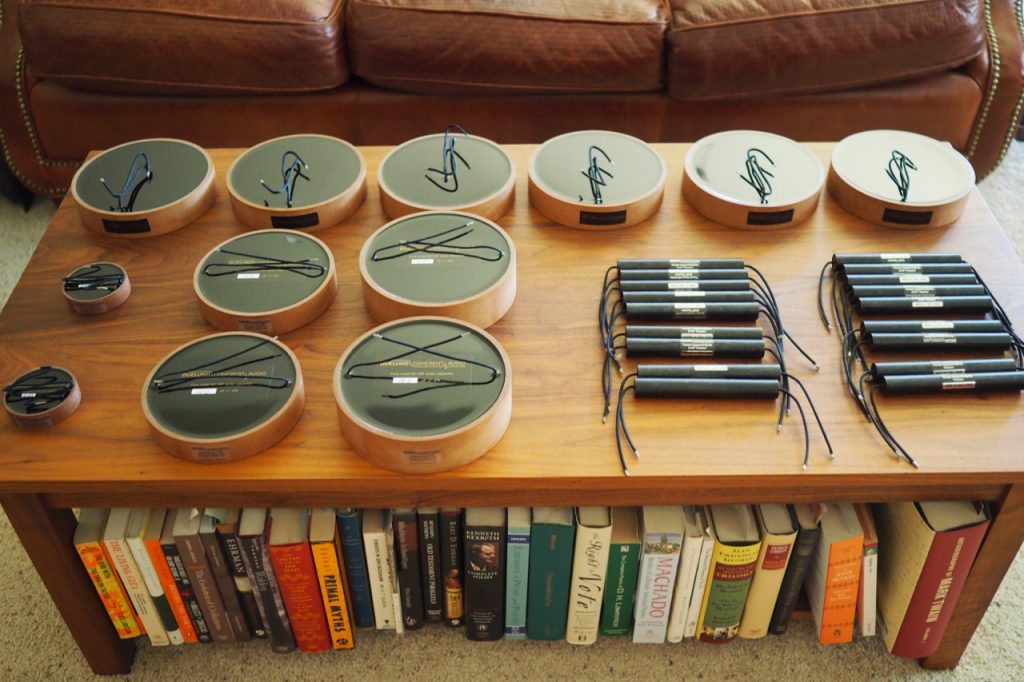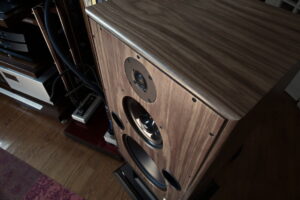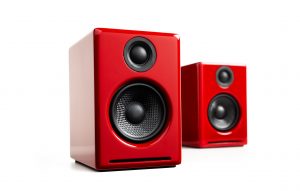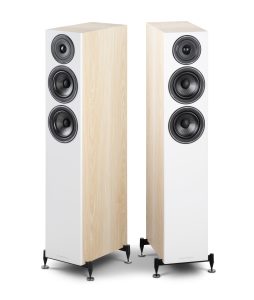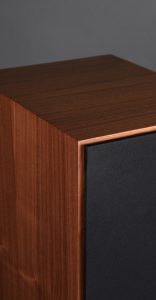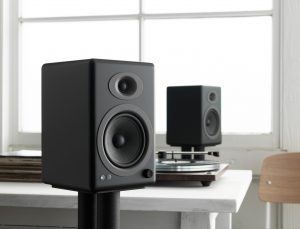Associated Equipment
The associated equipment used during the course of project, and during the review process, were as follows:
For an analog source I used my Classic Turntable Company hot-rodded Garrard 301 turntable in an Artisan Fidelity plinth, with a SPEC AP-UD1 Analog Disc Sheet turntable mat, a Peter Riggle Audio Engineering Woody SPU tonearm equipped with—what else—an Ortofon SPU Classic GM MkII stereo phono cartridge, stepped-up with an Intact Audio SUT that compliments the Ortofon SPU Classic GM MkII, and a Thomas Schick tonearm equipped with a Soundsmith Zephyr Mk III phono cartridge.
For a digital source I used my Apple MacBook to stream digital to my Mhdt Labs Havana vacuum tube USB DA via my DIY Art of Tone tinned-copper USB cable, and for an FM source I used my McIntosh MX110Z tuner-preamplifier.
Amplification components included the SPEC RSA-M3 EX Real Sound Amplifier in combination with the Soundsmith MMP3 phono equalizer, my vintage McIntosh MX110Z tuner preamplifier, a First Watt SIT-3 stereo amplifier, and a Pass Labs XA25 stereo amplifier.
Speaker cables were the aforementioned Duelund DCA16GA tinned-copper speaker cables, and interconnects were Duelund DCA16GA tinned-copper cables, one pair terminated with the new Duelund plastic-free RCA connectors, and one pair terminated with the previous model of Duelund RCA connectors.
My wall outlets are Acoustic Revive customized Oyaide R-1 outlets fitted with Acoustic Revive CB-1DB Receptacle Base Plates and CFRP-1F Carbon Fiber Outlet Plates. From the wall outlet an Acoustic Revive Absolute Power Cable provides AC to an Acoustic Revive RPT-6 Absolute NCF Power Distributor, which distributes AC to the DAC and amplification components via Acoustic Revive Absolute Power Cables. My turntable connects to the Acoustic Revive RPT-6 Absolute NCF Power Distributor with a combination of an Acoustic Revive RAS-14-TripleC NCF Power Stabilizer and a Furutech G-320Ag-18 power cable.
Other accessories included two Acoustic Revive RWL-3 Acoustic Conditioners for room treatment, Acoustic Revive RR-77 and RR-888 Schumann Ultra Low-Frequency Pulse Generators, and Acoustic Revive Quartz Under-Boards under the Intact Audio SUTs and the Acoustic Revive RPT-6 Absolute NCF Power Distributor.
Listening Impressions
As you've read along, I think you already have a pretty good idea of what I have to say about the Duelund CAST tinned-copper crossovers in the "Stokowski" Altec's—they're amazing—but let me provide you with a few more details you might find interesting.
During the day for general listening, and for running-in the Duelund CAST tinned-copper crossovers and other equipment in for review, I used my Apple MacBook to stream digital from Jazz24 to my Mhdt Labs Havana vacuum tube USB DAC via my DIY Art of Tone tinned-copper USB cable.
Those of you who are familiar with Jazz24 know how incredible their jazz programming is, and I donate regularly to them through Amazon Smile via my Amazon purchases to help keep the jazz flowing.
The Jazz24 stream already sounded pretty musical on the "Stokowski" Altec's, but after installing the Duelund CAST tinned-copper crossovers into the loudspeakers, the Jazz24 stream sounded even more musical than my benchmark Analogue Productions 45 RPM jazz LPs did on the Altec's before installing the Duelund crossovers. Impressive!
The Duelund CAST tinned-copper crossovers were performing superbly on the "Stokowski" Altec's, and they were doing everything that I had hoped for and more.
For reasons I'm not sure I completely understand yet, vintage Altec's are very flattering towards digital (take note digital fans), a phenomenon I've noticed with my vintage Altec 832A Corona loudspeakers, my vintage Altec A5 Voice of the Theatre loudspeakers, and my vintage "Stokowski" Altec loudspeakers.
All of my Altec's make even my relatively humble digital sources sound way better than they have any right to, and the "Stokowski" Altec's equipped with the Duelund CAST tinned-copper crossovers made my same humble digital sources sound jaw-droppingly good in a way that makes even vinyl fans like myself take notice.
As I listen to music, I like consider how well audio equipment performs in terms of musicality, audiophile-style sonics, and most importantly to me, the level of their ability to combine those traits of musicality and sonics that are responsible for eliciting emotional response when listening to music (you can learn more about how musicality & sonics contribute to eliciting an emotional response HERE).
Instead of just offering up a few example albums to make a few points about how well the Duelund CAST tinned-copper crossovers and the "Stokowski" Altec's performed in terms of musicality and audiophile-style sonics, I instead want to go "big picture" and tell you how they performed playing the vast amount of music I've listened to across a variety of sources—my digital front-end, my MX110 tuner-preamplifier's FM tuner, and my turntable—during the course of the Duelund-Altec Project.
The most striking aspect of the Duelund CAST tinned-copper crossovers performance was their preternatural ability in eliciting an emotional response while listening to music. The Duelund CAST tinned-copper crossovers are extraordinary in that regard, and whether I was listening to my humble digital front-end, my FM tuner, or my hot-rodded Garrard 301 turntable, they always drew me in and delivered a musical performance that was full of life, emotional intensity, and an intimate connection to the music.
Their ability to draw me in as listener, provide such a high level of emotional impact, and consistently deliver an intense musical experience from any source, was their most difficult attribute to fully articulate, mostly because its centered around emotions and feelings, which are harder to articulate for us guys (said only slightly tongue-in-cheek).
This aspect of their performance meant I would just get lost in the wave of the music flowing over me, marveling at what I was hearing and feeling to such an extent that my critical faculties just abandoned me, and it didn't matter if I was listening to jazz, rock & roll, blues, classical, or what have you, they all affected me the same intense way with Duelund-ized Altec's.
That's a great way to feel while listening to music, but it makes it hard to be able to fully articulate "the why" of how they achieve that effect, and how they do it so easily with pretty much any electronics I've had in the system during the project period.
Whether I was using the SPEC RSA-M3 EX Real Sound Amplifier in combination with the Soundsmith MMP3 phono equalizer, or my vintage McIntosh MX110Z tuner preamplifier combined with either the First Watt SIT-3 stereo amplifier or the Pass Labs XA25 stereo amplifier, that strong sense of emotional engagement with the music was always there in abundance, and yet at the same time it was still easy for me to hear all the attributes and individual characteristics of the associated equipment in an uncolored fashion.
The suave and nuanced musicality of the SPEC RSA-M3 EX Real Sound Amplifier & Soundsmith MMP3 phono equalizer combination came through clearly, as did the almost otherworldly sonic prowess and musicality of the First Watt SIT-3, as well as the transparent, dynamic, resolving, authoritatively powerful, and musically expressive nature of the Pass Labs XA25, for example, were all revealed in full, and yet that strong uncanny sense of emotional involvement of the Duelund-Altec combination never wavered.
As time goes on, you'll see me offering up impressions of their performance with vacuum tube electronics as well, so I guess you could say the reporting of my listening impressions of the Duelund "Stokowski" Altec loudspeakers is just getting started. Expect to read much more about them in future reviews.
While the elements of musicality and sonics were also really superb with Duelund CAST tinned-copper crossovers and "Stokowski" Altec's, their ability to elicit a strong emotional response while listening to music is the Duelund CAST tinned-copper components' most distinctive trait, and what separates them from anything else out there I've heard in terms of overall performance.
There are certain aspects of the combined performance of the Duelund CAST tinned-copper crossovers and the "Stokowski" Altec's that are truly extraordinary and contribute to their ability to elicit an emotional response; like their ability to play comfortably and naturally at soft levels all the way up to realistic live-like volumes; or their immense ease in playing in a dynamically realistic live-like fashion across the dynamic spectrum, from the subtlest dynamic nuances that made melodies come alive, to those big dynamic hits that make you jump; and their ability to portray realistic and believable timbral textures, tempo, and beat, was truly superb, all of which work together to make them the most consistently emotionally engaging and musically satisfying combination of crossovers & loudspeakers I've ever heard.
That includes my much more expensive Westminster's, with their outboard crossovers composed of exotic Duelund CAST pure silver and pure copper components. Don't get me wrong, the Westminster's and their Duelund CAST silver & copper crossovers are still amazing in their own right, and they go deeper in the bass and are more resolving from the midrange on up, but they can't match the lofty levels of musicality and emotional involvement that Duelund CAST tinned-copper crossovers with the "Stokowski" Altec's so effortlessly accomplish.
With the Duelund CAST tinned-copper crossovers and "Stokowski" Altec's brass sounded vividly and colorfully present, yet was still rich and natural in timbre. It was easy to hear the nuance of strikes on drum heads and cymbals, and to hear how they interacted with the acoustic space around them. Upright bass strings sounded rich, full bodied, and mellow, just like the real thing. Jazz guitar sounded like it was in the room with me. Piano sparkled with life and color, and the way the tones decayed from bursts of color into darkness was life-like, gorgeous, and spellbinding.
Musical instruments and vocals sounded superbly natural and vividly present, and there was always a sense of beautifully realistic instrumental and vocal tone. Unnatural edge to horns or unnatural sounding vocal sibilance simply didn't exist in the Duelund-ized Altec's world, and music sounded utterly natural in tone and timbre.
Generally, over my hifi life, I've found that overtly emphasized, etched, noticeably electronic or an unnatural sounding presentation of visuospatial information like imaging, soundstaging, or the sense of recorded space, detracts from my level of musical involvement.
Yet with the Duelund CAST tinned-copper crossovers on the "Stokowski" Altec's, that same visuospatial information was presented in such a naturally artful and live-like way that it contributed significantly to their ability to elicit a strong emotional response from me, and I never found the visuospatial information presented in such a way that it was a distraction from letting the music unfold in a flowing and natural manner.
Images were vivid in their presence, but had a robust "flesh and blood" feel of body to them that made images sound and "feel" natural. The soundstage was presented as wide, deep, and with distinct layering back into the stage, to the extent that recording was able to provide it, but perhaps the Duelund CAST tinned-copper crossovers most notable trait from a sonic perspective was their ability to suffuse the soundstage with a sense of recorded space that engulfed my listening room. Overtones went on forever, there was life, light, and color in the acoustic of the recorded space. I was simply there at the venue with the musicians, or they were in my room with me, depending on the style of the recording, which altogether created a very strong sense of being part of the music-making experience.
Bob James Quartet live at Jazz Alley in Seattle
One last thing I might add is how naturally "live" the "Stokowski" Altec's sound with the Duelund CAST tinned-copper crossovers, and by "live" I don't mean an exaggerated sense of upper-midrange presence that is often meant when that term is used.
Reduta Jazz Club in Prague
Rather, I mean "live" as in sitting in a live venue when listening to jazz, for example, like at Jazz Alley in Seattle or at the Reduta Jazz Club in Prague.
Nerdy audio nut that I am, I have done Real Time Analysis (RTA) of live performances in both Jazz Alley in Seattle and the Reduta Jazz Club in Prague, and when I do that same RTA of the "Stokowski" Altec's in my living room the result is remarkably similar to the live RTA results in those venues.
The "Stokowski" Altec's don't sound like loudspeakers that are voiced to appeal to audiophiles who like exaggerated visuospatial information.
Rather, they sound like what they were intended to sound like by Dr. Stokowski: loudspeakers that sound very much like the music he heard with his orchestras playing live music, and fine tuning his audio equipment to sound as much like "live" as possible.
So, the "Stokowski" Altec's with their Duelund CAST tinned-copper crossovers sound very "live" in the sense of live music playing in a music venue that has the reverb time dialed in perfectly, which means that the music playing in my living room sounds naturally live, tonally & dynamically correct, emotionally engaging, and makes me feel like I'm part of the live music making, which at the end of the day is what it is all about for me.
I think that's a pretty good summation of the strengths I hear from the combination of the Duelund CAST tinned-copper crossovers and the "Stokowski" Altec's, whether its streaming jazz from my digital front-end, listening to classical on my FM tuner, or doing late-night listening with vinyl.
Summary and Conclusions
Well, I hope you have enjoyed reading about the Duelund-Altec Project as much as I have enjoyed building the Duelund CAST tinned-copper crossovers for the "Stokowski" Altec's, listening to them, and then writing about the project for you.
The Duelund-ized Altec's remind me of when I first saw Vincent van Gogh's 1889 painting The Starry Night while it was on display at the National Gallery of Art in Washington, D.C. circa 1997. The Starry Night painting looked so different from any of the prints or photographs I had seen of it. It seemed to be alive, moving with feeling and color before my eyes, it was dramatic, forceful, and it completely captured my attention, awe, and admiration. The Starry Night exerted a power over me that was almost disorienting.
That's exactly the way the Duelund CAST tinned-copper crossovers installed into the "Stokowski" Altec's affected me when I listened to music with them. They were alive with music, moving with feeling and color before my ears. Dramatically, forcefully, engrossing me as a listener, filling me with awe and admiration for the music as it played before me, around me, and in me. Truly these are something special in the world of hifi!
You could certainly build—or have built for you - a fairly close replica of the "Stokowski" Altec's with their Duelund CAST tinned-copper crossovers, and I think you would be immensely pleased with their performance. If you want to do that let me know, and I'll help point you in the right direction.
Or, alternatively, you could use your own current loudspeakers, and then build some custom Duelund CAST tinned-copper crossovers for them. I think you would be blown away by the result just I have been with Duelund CAST tinned-crossovers for the "Stokowski" Altec's.
I don't think I really need to say this, but yes, the Duelund CAST tinned-copper components are highly, highly, recommended—dare to dream!
As I said earlier in this article, I consider the Duelund CAST tinned-copper components to be a dramatic advancement in performance for the audio arts, and I would like to extend a huge "Thank you!" to Frederik Carøe at Duelund Coherent Audio for supporting the Duelund-Altec Project by developing, building, and providing all of the Duelund CAST tinned-copper components that made this project such an impressive success. To order a custom set of Duelund CAST tinned-copper components of your own you can contact Frederik Carøe HERE.
I would also like to thank Santos Oropel of Troy Audio for providing the beautiful bespoke terminal strips for the Duelund-Altec Project that connected all the Duelund CAST tinned-copper components together. For more information about Santos' bespoke terminal strips, you can contact him HERE.
As always, thanks for stopping by to visit me here at Positive Feedback, and may the tone be with you!




